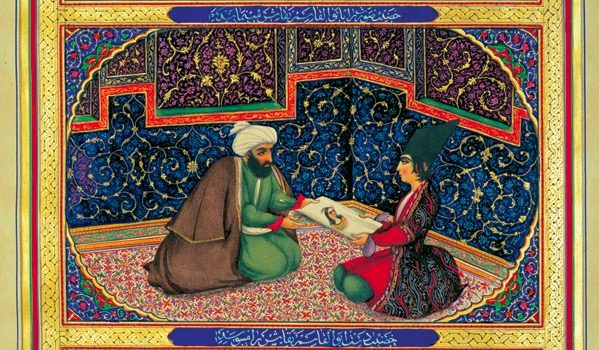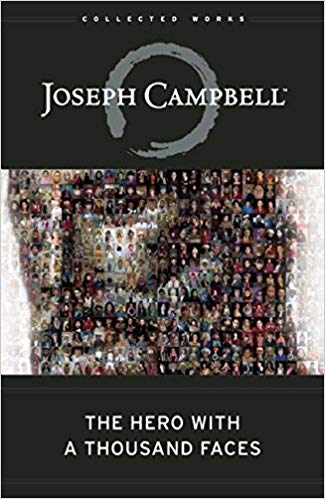

This article is an excerpt from the Shortform summary of "The Hero with a Thousand Faces" by Joseph Campbell. Shortform has the world's best summaries of books you should be reading.
Like this article? Sign up for a free trial here .
Who was Kamar al-Zaman? How does this prince’s adventures in Arabian Nights tales follow the conventions of the hero’s journey?
Kamar al-Zaman is a prince in the tales of The Arabian Nights. The stories of Kamar al-Zaman, Princess Budur, and the otherworldly Maymunah follow the hero’s journey popularized by Joseph Campbell in The Hero with a Thousand Faces.
We’ll examine two popular Kamar al-Zaman tales and explore how they follow the stages of Campbell’s hero’s journey.
Prince Kamar al-Zaman and Princess Budur
This concept of the hero’s journey stages is well illustrated in the Arabian Nights tale of Prince Kamar al-Zaman and Princess Budur. In it, the prince has rejected his father’s demands that he take a wife, citing his desire to commit his life to Allah and avoid the pleasures (and sins) of the flesh.
The sultan is advised to broach the subject with his son in the presence of a great council of state, the rationale being that the prince will surely be goaded into accepting marriage under these conditions of immense social pressure. But Kamar al-Zaman again refuses his father and insults him in front of his great ministers and viziers. Enraged, Kamar al-Zaman’s father has him imprisoned in a decrepit tower, where he is to reflect upon the injury and shame he has brought upon his family.
Simultaneously, in distant China, Princess Budur—the beautiful daughter of the emperor—is similarly refusing marriage to all suitors her father presents to her. She even threatens to kill herself with a sword if he brings up the subject of matrimony again. Like the sultan, the emperor locks his daughter up and appoints ten old women to guard her. He then sends messengers to all the kingdoms of Asia, telling the rulers that Princess Budur has gone mad.
Both the hero and the heroine have taken the negative path and refused the call of destiny. They are a predestined match, but it will take a miracle to bring them together.
Hero’s Journey, Stage 2: Refusal of the Call
The story of Kamar al-Zaman demonstrates stage 2 of Joseph Campbell’s hero’s journey: the refusal of the call. A common feature of the monomyth is the hero’s refusal of the call, an initial reluctance to follow the steps of their destiny. In folk tales and myths across the world and throughout history, this refusal amounts to a selfish impulse to give up one’s narrow, immediate interests in the pursuit of spiritual awakening or even the salvation of the universe, as is the case with Kamar al-Zaman. In psychoanalytic terms, the refusal represents the clinging to infantile needs for security. Thus, the mother and father are the figures preventing true growth and transformation as the ego fails to develop and embrace the world outside the nursery.
The refusal can have grave consequences, both for the hero and for the wider world.
- In One Thousand and One Nights, a collection of medieval folk tales from the Middle East, a Persian city is turned to stone by the wrath of Allah—punishment for the refusal of the people of the city to heed the call of God.
- In the Book of Exodus, Lot’s wife is turned into a pillar of salt for looking back on the burning cities of Sodom and Gomorrah, which she had been commanded by God not to do.
- There is the medieval European legend of the Wandering Jew, cursed to walk the earth until Christ’s return, as penance for having taunted mankind’s redeemer on the way to his crucifixion.
But there is hope for reluctant heroes like Kamar al-Zaman. While some of them, like those we’ve mentioned above, are bound to their fate, others are not. Not everyone who hesitates is forever beyond salvation or has lost their opportunity to fulfill their destiny.
Kamar al-Zaman and Maymunah
We see the supernatural aid theme as we return to the story of Kamar al-Zaman and Budur. A shape-shifting figure named Maymunah crawls out of an old well in the tower where Kamar al-Zaman has been locked up by the sultan (the well symbolizes the unconscious and Maymunah the flowing up of unconscious thoughts into the realm of the conscious).
Finding Kamar al-Zaman sleeping, she is awed by his physical beauty. Flying away, Maymunah encounters another supernatural being called Dahnash, who declares that he has just returned from China, where he has laid eyes on the most beautiful woman in the world—none other than Princess Budur. The two spirits argue about which royal youth is fairer. Each of them brings the other to their preferred candidate’s resting-place, but they cannot decide who is more beautiful unless they see them lying side-by-side.
Thus, these two otherworldly helpers begin the process of uniting the two fated youths, Prince Kamar al-Zaman and Princess Budur, without either the prince or princess exerting any conscious will. The helpers are moving the hand of destiny.
Hero’s Journey, Stage 3: Supernatural Aid
The story of Kamar al-Zaman and Maymunah demonstrates stage 3 of Campbell’s hero’s journey. Some heroes respond to the call immediately. They are then guided along the path of adventure by a supernatural helper, like Maymunah in the story of Kamar al-Zaman, as part of their first steps along the hero-journey. This helper is the personification of destiny. Often, this figure takes the form of an old man or old woman, like the fairy godmother, wizard, shepherd, smith, or woodsman figures of European fairy tales. But it can also take on other forms, like that of the Virgin Mary in many Christian saints legends from the Middle Ages. In the ancient mythology of Egypt and Greece, this figure was the boatman or ferryman, the conductor of souls to the afterworld—Thoth in Egyptian lore and Hermes-Mercury in Greek legend.
The supernatural helper is a benign, guiding figure who protects the hero and steers them along to meet their destiny. They exist to comfort the hero and assure them that, though the way may be unsure and frightening (as all of our journeys through life will be at one time or another) they will endure and come through their adventure stronger than when they initially set out.
———End of Preview———

Like what you just read? Read the rest of the world's best summary of "The Hero with a Thousand Faces" at Shortform . Learn the book's critical concepts in 20 minutes or less .
Here's what you'll find in our full The Hero with a Thousand Faces summary :
- How the Hero's Journey reappears hundreds of times in different cultures and ages
- How we attach our psychology to heroes, and how they help embolden us in our lives
- Why stories and mythology are so important, even in today's world






